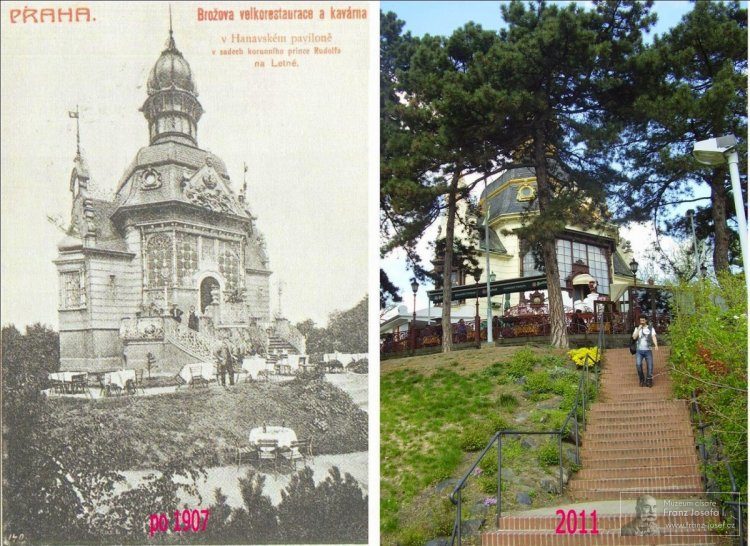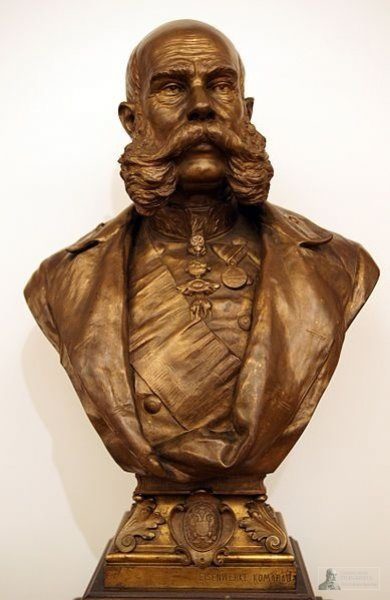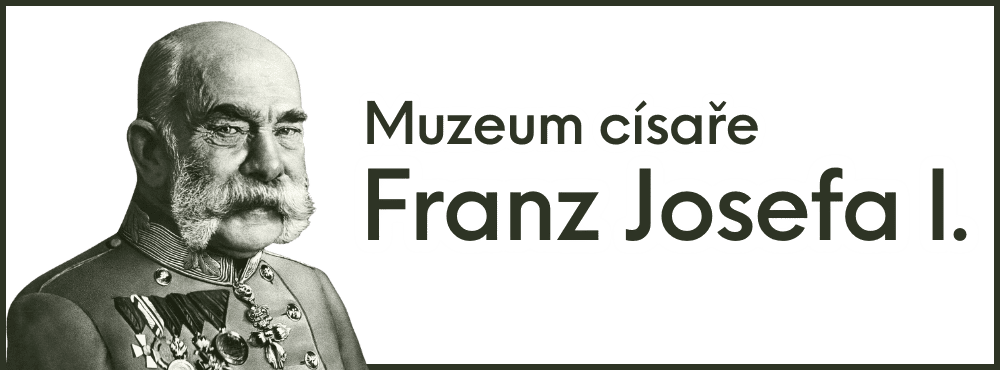Hanavsky Pavilion in Prague
The most magnificent pavilion of the Jubilee Exhibition in 1891 was donated by Prince William of Hanau (Hanavy) to the city of Prague.
At the Land Jubilee Exhibition, which took place in 1891, the pavilion of the princely Hanav ironworks in Komárovská enjoyed a lot of attention from visitors. According to the design of architects Otta Hieser and J. Hercík, it was built during harsh winters by the workers of princely foundries under the construction supervision of architect František Červinka. The modeler Zdeněk Emanuel Fiala was particularly responsible for the final form of the building. The pavilion was built, as was reported at the time, in a rich Dutch Baroque style with cast iron decorative and figural motifs in the Art Nouveau style. It was the first building with cast iron construction in Prague. The stand was used to promote the products of the ironworks, and the bust of His Majesty Emperor Francis Joseph I was certainly not to be missed. The original model was created by the sculptor Natter, from whom the ironworks purchased the exclusive reproduction right. The emperor himself visited the pavilion on October 1, 1891.
His Grace Prince William of Hanau was waiting for him in front of the pavilion, and he personally guided the emperor through the exhibition.
The country jubilee exhibition lasted from May 15 to October 18 and was visited by almost 2.5 million people during that time. Approximately ten days before its end, a representative of the ironworks visited Prague's burgomaster JUDr. Jindřich Šolec to hand him the deed of donation, according to which the prince decided to donate the most magnificent pavilion of the Jubilee Exhibition in Prague. The city councilors then decided to transfer the pavilion to Letná, and already in mid-December 1891, the building found a new place and application. Later, a restaurant was set up in it and rented out to the relevant tenant. At that time, however, the pavilion was located in the Hradčan cadastre (no. 223), but today it can be found in the Holešovice-Bubny cadastre (Letenské sady 175). Over the years, however, this charming building fell into disrepair. In 1967, the pavilion was dismantled, new casts were made according to historical photographs, and the pavilion was reassembled. Perhaps the forthcoming international congress of architects in Prague and the fact that the famous French architect Le Corbusier praised it in the 1920s contributed to such a demanding reconstruction.
Foto: http://letna.7x.cz/unnamed/fotogalerie/historie




